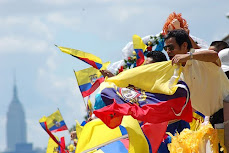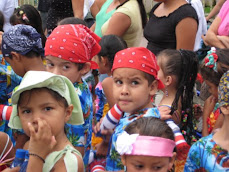As you probably know (if you’ve been reading my posts) I’ve been in
So I went to the Casa Blanca and watched the cliff-hanger match (they tied 2-2) which, of course, was just great. But what really caught my attention was at the beginning when they played the national anthems for both teams. I know, music nerd moment. But anyway, it was so weird because, although they came from completely different countries and cultures, I honestly couldn’t tell which anthem was which - until I looked around at the fans, of course. In a way, the anthems both reminded me of the pomp and drama of Italian opera. So, a bit confused and intrigued, I thought I’d take a closer listen on YouTube when I got back to the hotel. So that’s what I did. Except I figured I’d just look at the music itself and not the lyrics, because all national anthems seem just to say the same thing anyway.
As it turns out, up close they are indeed extremely similar, although not officially the same genres. The Italian anthem, called Il canto degli Italiani, (Link to YouTube), is meant to reflect Italian heritage (which of course would include opera). And according to avtandil from the National Anthems Online Forums, the anthem is meant to remind one of “the battles for freedom waged by the Lombard towns, the Florentine republic, the Genoese, together with the young Balilla, against the Austrians, and the Sicilians against the French in the so-called Sicilian Vespers" (1). The specifications of the latter purpose are really only reflected in the lyrics, but the war and heritage aspects can clearly be seen in the music itself.
Ironically,
First of all, there’s the obvious commonality which initially shocked me: the rhythm. Listen to the Ecuadorian an them and, because of the dotted rhythmic pattern in the primary theme (<--- over there), you just might think yourself in
them and, because of the dotted rhythmic pattern in the primary theme (<--- over there), you just might think yourself in  y line.
y line.
Ok, now look at the first theme in the Italian anthem. As you can see, there are dotted rhythms here as well. Of course, the melodic mood is completely different, with repeated notes over the bar-line emphasizing the first beats most of all, in turn giving the music a sort of lilting liveliness, which contrasts the march-like melody of ¡Salve, O Patria!. Nevertheless, they both make significant use of dotted rhythms, which provides that stately elegance we all know from European dance music.
There is also a dance-like feature found in the accompaniment of both anthems. Of course this may vary with the arrangement, but in the recordings I found I noticed a lot of “boom-chick-boom-chick” rhythms. Actually, it’s almost reminiscent of a 3/4 waltz – there is a strong root on the down-beat, then weaker 3rd, 5th and 7th degrees of the triad on beats two and three – with the exception that this “boom-chick” has a duple or quadruple meter feel. So, in this case, basses play the root on beats one and three, while horns, strings, cymbal or maybe snare lightly completes the chord on beats two and four to create this lilting accompaniment. In dance, it would be like, "step-turn-step-turn-etc." Although the instrumentation varies, the important part is the mood that’s created. For example, in Salve at
Another common point in the accompaniment of these two pieces is the theme being r hythmically echoed by
hythmically echoed by the horns. In the Ecuadorian anthem (---->) the horns’ echoes are on triplets, while the Italian anthem (<----) keeps with the dotted rhythm motif. However the idea of the echo in the horns is the linking point, and – who knows? – maybe it symbolically represent something: a past national experience like profound unity and cooperation within the country, which would have been necessary in the ongoing fight for freedom. I know it's a stretch, but there is no information as to what the music itself reflects except the interpretation of the sounds.
the horns. In the Ecuadorian anthem (---->) the horns’ echoes are on triplets, while the Italian anthem (<----) keeps with the dotted rhythm motif. However the idea of the echo in the horns is the linking point, and – who knows? – maybe it symbolically represent something: a past national experience like profound unity and cooperation within the country, which would have been necessary in the ongoing fight for freedom. I know it's a stretch, but there is no information as to what the music itself reflects except the interpretation of the sounds.
Although without the lyrics it’s impossible to know the exact historic events symbolized by the music, in both anthems it is evident that at least there is an inherent narrative aspect within the instrumental arrangement. This is only obvious because of the distinct indicative changes in mood, attained through the texture, timbre, and harmony.
For example, the texture of the instrumental prelude to Salve is monophonic, as the whole ensemble plays the first bar in unison. But then, in the second measure, the arrangement splits into polyphony for the staccato quarter notes, while still remaining homorhythmic. The first eight bars of the prelude are as such, but at measure nine the texture changes again to homophony, with a waltz-like (only it is 4/4, not 3/4) accompaniment below the soft melody in the flutes. Then, at bar 17, as the prelude ends and the lyrics begin, the accompaniment finally gains weight and adds more rhythmic punctuation, such as the triplet echoes mentioned above. However, when the B theme arrives, we go back to the melody-dominated homophonic texture as in the prelude. Once the link after theme D is reached, a homophonic and homorhythmic fanfare appears which again contrasts the preceding theme. This fanfare likely has military significance and could represent the country’s bravery – or something along those lines –, whereas the simple, soft homophonic melody could represent peace, or the beautiful rural countryside for which the nation fought. In any case, the contrasting textures hint towards specific events which are to be reflected in the music.
Similarly, the Italian anthem displays just as much contrast between its sections. However, in this arrangement, the narration is made most obvious by the instrumentation and use of different timbres. For example, the melody in the prelude stays strictly with the trumpets, in their fanfare-style opening (another link to the Ecuadorian anthem!). In the A theme, however, the melody shifts to the upper strings and reed woodwinds, giving it a much lighter feeling. The second theme moves to the flutes and glockenspiel, which creates a mood approaching evanescence, before returning to the A theme with the original instrumentation. Hence, in Il canto degli Italiani, the timbre is used to create different moods which reflect the narration intended for the anthem.
I have also noticed another musical device which is used in both the Ecuadorian and Italian anthems to help outline the narration: the harmonic structure. To put it quite simply, it is the most obvious structural parallel between these two pieces. The B theme of Il canto moves to G minor, the relative minor of the root key, Bb major, while the second theme in Salve is in D major, the Dominant major of its root key, G major. Oh but wait, here comes the good part: in both anthems, the C theme is in the Subdominant major of the root key! In Il canto it’s in Eb major, and in Salve it’s in C major. Talk about a parallel!
Who knows, maybe I’m over-analyzing this? Because we can’t know for sure what was intended as a narrative, or what historical staples are supposed to be reflected in the music of these national anthems. But I suppose we can know what
Well, anyway, it was an intense soccer game, but I learned a ton more than what I paid for. The score to remember in my books is the musical score between the Italian and the Ecuadorian national anthems, which also just happens to be a pretty equal match.
A few sources:




No comments:
Post a Comment